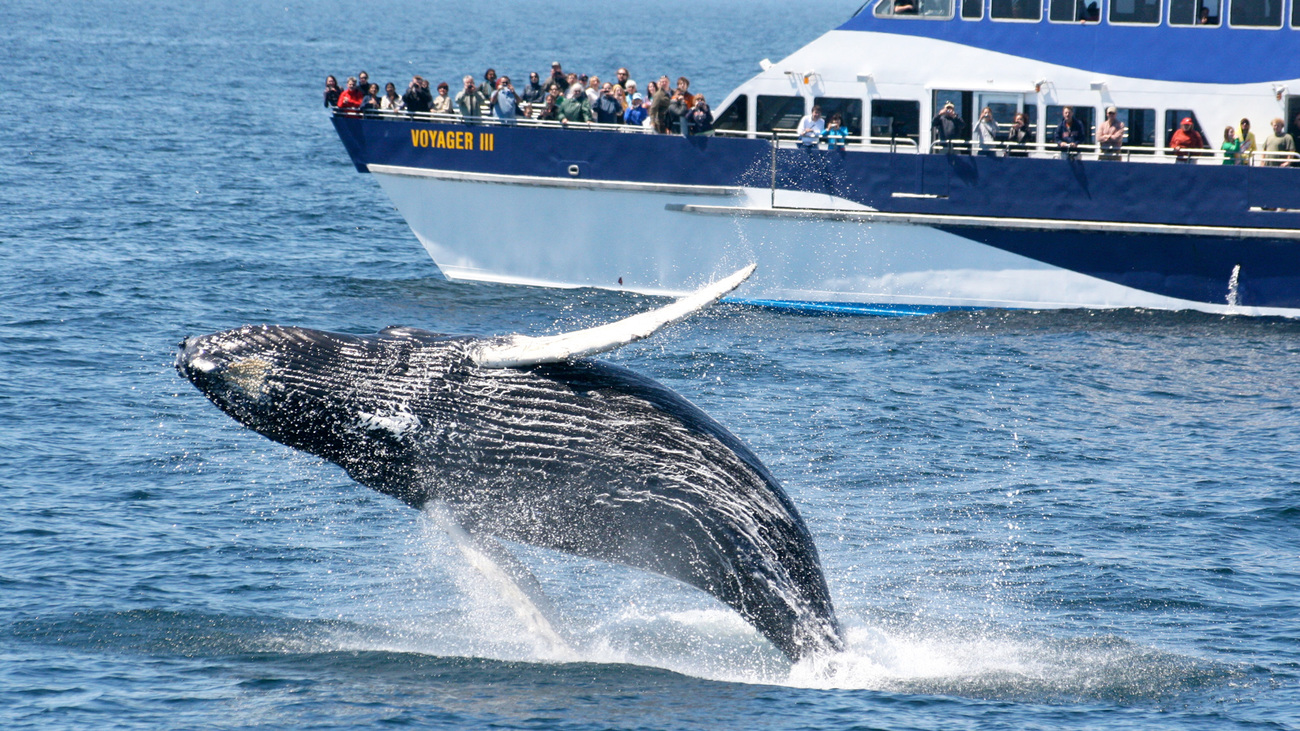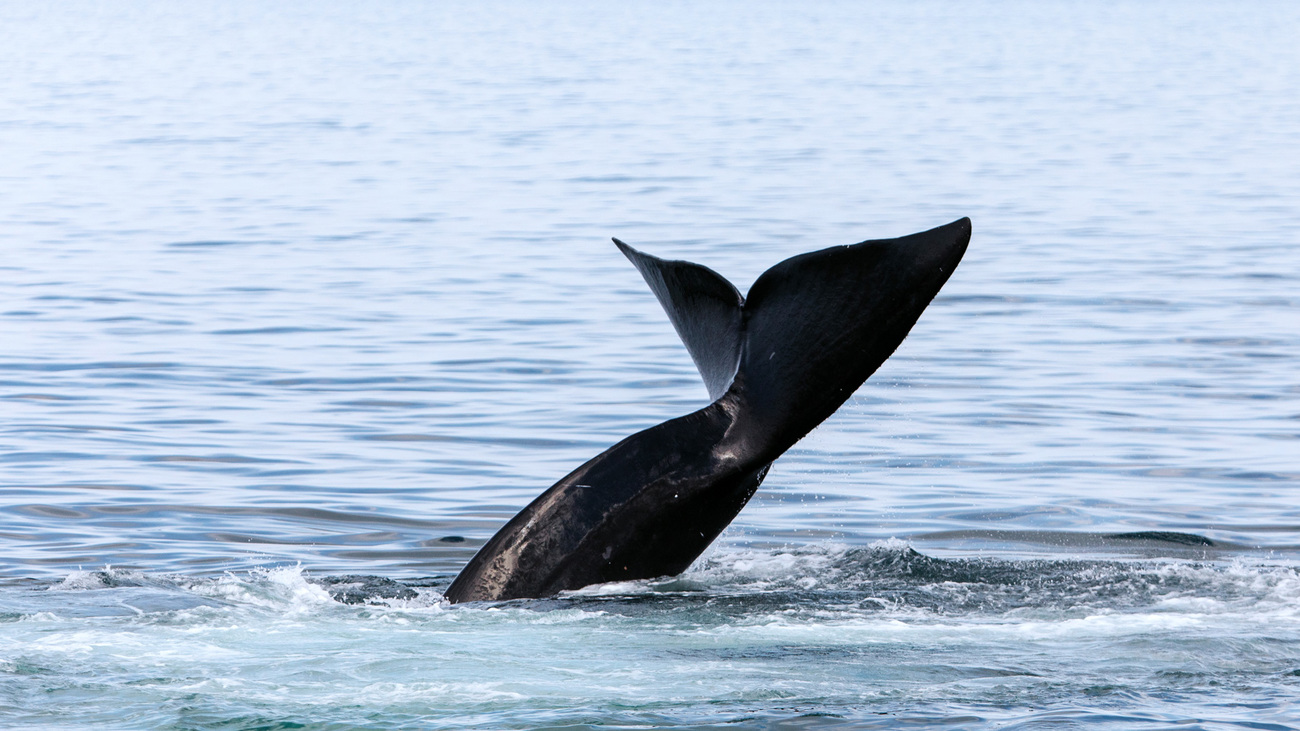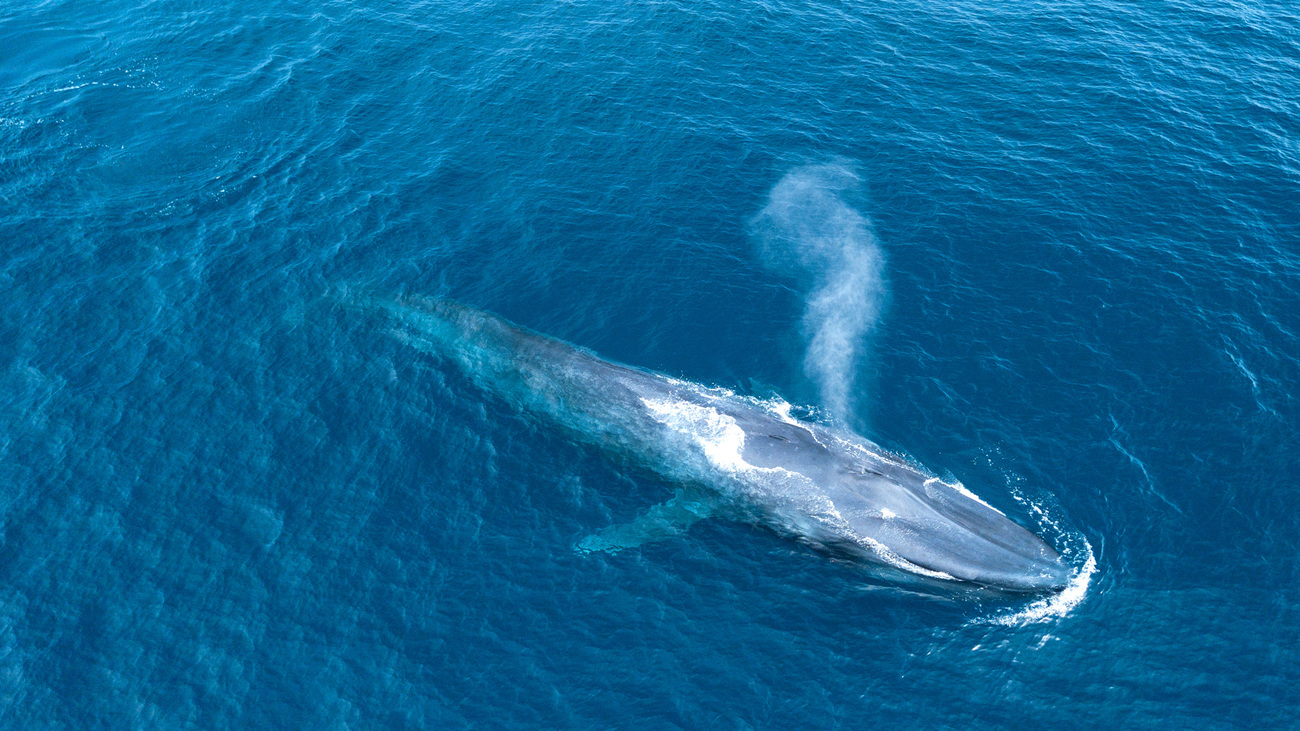Whale Watching Promotion - Global
Watching is better than whalingThe importance of whale watching: protecting marine life through responsible tourism
The importance of whale watching: protecting marine life through responsible tourism

Responsible whale watching lets us experience the awe and majesty of these magnificent animals without causing further harm. It can also have net positive benefits—as we learn more about whales and appreciate their beauty, we start to recognise their importance and our responsibility to protect them.
At IFAW, we’re dedicated to helping humans and animals thrive together. One of our goals is to create a safer ocean for whales, such as humpback whales off Cape Cod, minke whales in Iceland, and endangered blue whales in Sri Lanka. Supporting ethical and sustainable whale watching can help support marine biodiversity.
The history of whale watching
Whale watching is a relatively new practice, at least as a dedicated industry. Until the 1950s, the only commercial interest in whales was for their meat and body parts. Commercial whaling was once widespread and rapacious, killing an estimated 2.9 million whales in the 20th century alone. Today, only three nations continue to perpetuate commercial whaling.
The large-scale slaughter of whales led to a catastrophic decline in many whale species. Some, such as the grey whale, were hunted almost to extinction. This led some cities to designate public venues for watching whale migration. One of the first was Cabrillo National Monument in San Diego, California.
In 1955, a California fisherman recognised that whale migration occurred during times of the year with limited fishing. Chuck Chamberlin charged passengers $1 each for a trip on his boat to see the migrating whales. This is the first recorded example of commercial whale watching.
Chamberlin’s idea took hold, and whale watching grew steadily throughout the 1960s and 1970s. This coincided with the growing realisation that commercial whaling was cruel, unnecessary, and unsustainable.
Commercial whaling reduced dramatically during the late 1970s before the International Whaling Commission (IWC) declared a full moratorium in 1982. At the same time, whale watching was expanding into over 87 countries.
Although whale watching has largely been a story of hope and recovery, this huge expansion in the industry did lead to problems. Early whale watching tours paid little attention to the needs or well-being of the animals, and overcrowding was rife.
More recently, the whale watching industry has focused more on ecotourism and animal welfare. Responsible whale watching operators want their guests to experience whales’ natural behaviour in their habitat without causing harm. In the hands of ethical tour operators, whale watching can be an enriching experience for tourists, local communities (who can benefit economically), and whale populations.
How whale watching benefits whales, communities, and the ecosystem
Ecotourism, tourism for the purpose of experiencing the natural world, aims to have as little impact as possible on nature. Whale watching is just one example of how ethical ecotourism can benefit animals, communities, and the environment.
Here are some tangible benefits the whale watching industry can bring when prioritising responsibility and ethical decision-making.
Creating employment opportunities
Whale watching is a relatively small industry, but it still provides employment for thousands of people around the world. Crucially, these jobs are located in coastal communities where traditional fishing is struggling, and high-tech jobs are hard to come by.
Transforming (and sustaining) coastal communities
Coastal communities have always relied on their relationships with the ocean for their economies and identities. Whale watching allows these communities to retain that relationship and become custodians of the ocean in a way that avoids exploitation.
Generating sustainable income
Whale watching doesn’t just provide employment for those directly involved in tours. Entire communities can rely on the incomes this kind of tourism generates, ensuring widespread support and shared responsibility for whales and other marine life.
Raising awareness about conservation
Whale watching tours aren’t just an opportunity to see these magnificent animals.They also provide a perfect setting in which to highlight threats to marine life and the work of conservation efforts. As whale watchers gain an understanding of whales’ complex behaviours, strong social bonds, the threats they face, they may become more ardent supporters of marine conservation and policies that protect whales. Seeing in real life the animals that are saved by such work helps translate education into meaningful action.
Supporting research
Scientific research can be a difficult and time-intensive endeavour. The whale watching industry can be pivotal in helping researchers access remote areas and collect data. Researchers can travel with whale watching boats or train tour guides to record accurate findings to be analysed.

Is whale watching ethical?
Responsible whale watching has evolved to be a far more ethical economic alternative for commercial whaling. Ethical whale watching tour operators prioritise the needs and well-being of whales and the ocean above everything else.
The IWC oversees whale watching worldwide. The organisation aims to understand and minimise the risks whale watching may pose to whales. It also encourages countries to set clear rules for the whale watching industry.
Ethical whale watching strikes a balance. It tries to minimise contact with (and harm to) whales, protect ecosystems, educate visitors, and provide an exciting experience they’ll remember. It’s a lot to achieve, but it can be done—and it provides countries with an ethical economic opportunity to replace commercial whaling.
Is whale watching dangerous to whales?
As we’ve mentioned, ethical whale watching prioritises the safety and well-being of whales. Without due care, whale watching experiences can harm these animals.
One of the most obvious dangers comes from vessel strikes. This is when a boat or ship comes into contact with a whale. The threat of vessel strikes is one reason for the minimum distances the IWC recommends leaving between boats and whale pods.
Other dangers to whales can be less apparent. The presence of boats close to a whale pod can disrupt the whales’ regular activities. For example, if whales are foraging for food or resting, they may stop to stay alert around nearby boats.
The presence of humans can even increase whales’ respiratory rates. This is akin to humans breathing more quickly when they are nervous or stressed. In the long term, this increases their daily energy use, putting pressure on their ability to feed themselves.
When stressed, female whales may stop producing enough milk for their calves, reducing calf survival rates and putting the survival of the pod—and sometimes the species—at risk.
If whales become too stressed, they may leave the areas associated with whale watching tours. Unfortunately, this means moving to lower-quality habitats and worse feeding grounds, endangering the pod.
Researchers are also becoming increasingly aware of the impact of noise pollution on whales. Whales have excellent hearing, and the noise produced by vessels can cause distress and make it difficult for them to communicate.
Despite these challenges, there are ways to make whale watching on the water safe for whales, by choosing the right tour provider and observing essential rules.

How to choose a sustainable whale watching operator
For whales (and the marine environment more generally), the difference between a sustainable, ethical whale watching operator and an unethical one is dramatic. For tourists and travellers trying to choose, however, it can be difficult to tell them apart.
Here are some things you should look for in an ethical whale watching operator.
They follow all the rules
Ethical tour operators know that the rules exist for a reason and are keen to show you they take their responsibility seriously. Familiarise yourself with local guidelines before your trip (such as these for the US) and research different tour operators.
They take pride in low-impact adaptations
The best tour operators want to have minimal impact on animals and ecosystems, and they modify their boats to achieve this. Look for organisations that highlight their eco-friendly, low-noise boats.
They avoid high-risk encounters
Visitors can be enthralled seeing a mother and calf swimming together, but these encounters aren’t nearly as enjoyable for the animals. Ethical operators will have a policy to avoid these high-risk situations and protect vulnerable young whales.
They partner with animal welfare organisations
Organisations such as Whale Sense and World Cetacean Alliance aim to raise standards in the whale watching industry. Great operators are fully on board with this goal and will be eager to join. Focus on operators who have been certified by one of these organisations.
When and where to see different whales
There are over 90 different whale species, and they can be found in all the world’s oceans. Let’s look at some of the best places for whale watching and which whales you’re likely to see on your trip.
UK
Whales can be found along most of the UK coastline, but there are several key areas for whale watching. Visitors should consider the west coast of Scotland, Moray Firth on the east coast of Scotland, and Cardigan Bay in Wales.
Lucky whale watchers might see fin whales, minke whales, humpback whales, and orcas in the UK.
US
Almost all coastal areas of the contiguous US, as well as Hawaii and Alaska, offer opportunities for whale watching. Here are some of the key regions and the whales you can find there:
Pacific northwest
This area, including Washington and Oregon, is known for orcas, humpback whales, minke whales, and grey whales.
New England
Visitors to Maine, Massachusetts, Connecticut, and Rhode Island could see humpback whales, fin whales, minke whales, pilot whales, and even critically endangered North Atlantic right whales.
California
California is the birthplace of modern whale watching and offers the opportunity to see grey whales, humpback whales, fin whales, minke whales, and blue whales.
Alaska
Those venturing further afield into Alaska can experience dramatic vistas as they meet grey whales, humpback whales, orcas, and beluga whales.
Hawaii
When travelling to Hawaii, you may spot humpback whales. Experts recommend planning your trip in February to have the best whale watching experience.
Iceland
One of the few countries in the world where commercial whaling is still legal, IFAW has been working in Iceland to promote ethical whale watching as an economic alternative. IFAW’s collaboration with IceWhale, an organisation of Icelandic whale watching tour operators, is promoting responsible whale watching and helped end the hunting of minke whales around Reykjavik. Together, we’ve increased the number of tourists going whale watching in Iceland by tenfold and reduced the number of travellers eating whale meat by 71%.
The summer is a particularly good time to see whales in Iceland. The most commonly spotted species include humpbacks, minke whales, orcas, fin whales, sperm whales, and blue whales.
New Zealand
50% of the world’s cetacean species can be seen in the waters around New Zealand, making it a perfect whale watching destination. Although whales can be seen throughout the coastline, Auckland’s Hauraki Gulf and Kaikoūra are some of the best locations.
Visitors to New Zealand can spend time watching sperm whales, Bryde's whales, southern right whales, humpback whales, and orcas.
Argentina
In Argentina, both Península Valdés and Tierra del Fuego have a long history of whale watching, giving visitors the chance to see elephant seals and sea lions as well as whales. Argentinian waters are home to southern right whales, humpback whales, and orcas.
Kenya
Kenya’s history of safaris has made it a longstanding destination for wildlife tourism. More recently, Kenya has developed a dolphin and whale watching industry, often focusing on humpback whales that migrate through Kenyan waters between August and October.
Visitors wanting whale (and dolphin) watching experiences in Kenya should travel to the Malindi Watamu National Marine Park and Reserve or the Kisite Mpunguti National Marine Park and Reserve.

How IFAW promotes sustainable whale watching
Thanks in part to the growth in whale watching, commercial whaling is a dying industry, but it’s not gone yet. IFAW is working hard to promote ethical whale watching and finally bring an end to the slaughter of whales for profit.
We need to increase the pressure on governments in Norway, Iceland, and Japan to enforce the global ban on commercial whaling and close loopholes.
Learn more about how you can help IFAW put an end to commercial whaling.
Related content
Every problem has a solution, every solution needs support.
The problems we face are urgent, complicated, and resistant to change. Real solutions demand creativity, hard work, and involvement from people like you.